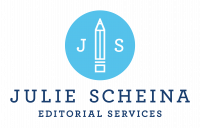When I started working in publishing, I heard the editor’s role described as being an expert reader or the reader’s advocate. More than fifteen years later, I still think those descriptions fit, though I would add author’s advocate to the list. Editors work to bridge the gap between authors and readers, helping authors engage readers more effectively and ensuring that the author’s creative vision is coming through on the page.
While an editor’s job at a publishing house encompasses much more than solely editing, as a freelance editor I’m able to make editing my primary focus. I work directly with authors at various stages of the writing and publishing process, so on any given day, I might be writing a manuscript critique; answering an author’s questions about the publishing industry; brainstorming with an author about a tricky plot point; sharing feedback on an author’s query letter and synopsis; or preparing developmental editorial notes for an author and agent before a book goes out on submission to publishers.
During my years as an in-house editor and a freelance editor, my editing objectives—helping authors to strengthen their work and achieve their creative vision—and my editorial process have remained largely the same. Most often, my work begins with a close reading of a full manuscript. During this first read, I take notes for myself, either in a separate document or directly in the manuscript file. These could be questions, comments about whether or not a particular scene is working effectively, a timeline of the story’s major events, or even a rough reverse outline.
After my initial read, I review my notes and identify the areas that I had the most questions about. I also think about the story as a whole—how do the characters grow and change over the course of the manuscript? Are the characters’ actions in line with their internal motivations and external goals? Are there sections in which the pacing begins to slow, or sections in which the action is taking place so quickly that it becomes hard to follow? Are the climax and conclusion satisfying? Is the voice consistent?
When I share feedback, my goal is always to help the author prioritize their revision, focusing on changes that will have the biggest impact in strengthening the overall book, rather than changes that might only impact a single scene. I also aim to ask questions and to share ideas that will jump-start the brainstorming process. For instance, I might ask questions about clarifying the main character’s motivations, or share some potential ideas for how the main character could play a more active role in the story’s resolution.
After reviewing my notes, I usually have three or four primary focal areas to include in my editorial letter. Depending on the type of feedback and the manuscript length, I typically review the manuscript again as I expand and finalize the letter. I know that receiving editorial feedback can be overwhelming, and I reread the editorial letter multiple times to ensure that the suggestions I’m making are as clear and helpful as possible. My intention is for authors to come away from my notes feeling inspired, empowered, and excited to return to their manuscript.
Your Editor Friend,
Julie
